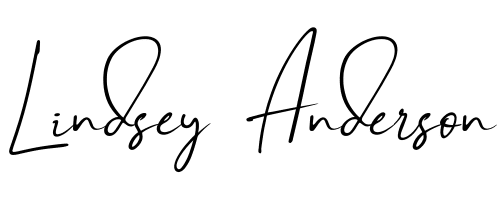Anyone can make a newsletter. How do you make sure the people who sign up for yours stick around? Keeping some of the email newsletter best practices in mind will help you get started. I’m here to help with that!
These days, newsletters are fairly easy to set up; it’s part of the glory of modern technology. But you’ll be competing with a lot of other newsletters, and your audience members only have so much time in a day to be engaging with content.
E-newsletters are common these days. Almost every business, website, or blog has one you can sign up for. Very few people do email newsletters right, and that’s understandable! These newsletters are a tough nut to crack. It often takes people years of experience to learn the dos and don’ts.
I’m going to help you get past those initial stumbling blocks. Your newsletter might still take a while to get on its feet, and that’s fine. But if you keep these top email newsletter best practices at the forefront of your newsletter crafting, you’ll be a step ahead of those who got lost finding the starting line.
It’s important to note that crafting newsletters is a key component of The CLICK Technique: K – Keep Going. Once you have your audience’s e-mail, it’s time to keep them warm by reaching out to them at least once a week. The best way to do that is (you guessed it!) with a newsletter.
All that said, today I’ve got some tips for newsletter creation, including consistency, focusing on a purpose, incorporating visual elements, content delivery, and getting permission from your audience. It’s a good chunk of info to cover, so let’s get started on the top five email newsletter best practices.
The First of the Email Newsletter Best Practices: Have a Purpose
Your newsletter needs to have a clear purpose. Why should your intended audience sign up for it? What will they get out of it? Like any part of your business or website, your newsletter needs to be filled with worthwhile content.
Go back to the heart of your brand, and build your purpose from there. Make sure that each newsletter is centered around that purpose. Of course, you’ll be building on your brand image and hooking back to your website, but that’s just the start. You need a reason to be emailing them.
You wouldn’t send an unsolicited email to a friend unless you had a reason, right? Think of your readers as your friends. You might want to check in and see how their day is going. You might want them to know what’s new with you. You might want to tell them an exciting story about something that happened to you. Connect with your readership like you would a friend!
One of the top email newsletter best practices is to keep the purpose for your emails at the head of the proverbial ship. This isn’t easy, I know. If you’re keeping consistent with your newsletter, it can be challenging to come up with informative, interesting, and purposeful content for every single newsletter. You’re a busy person!
I assure you, however, that this is time well-spent. Newsletters are a crucial part of community engagement, and can net you a lot of traffic to your site. Spend the time to brainstorm what your readership wants–you won’t regret it.
Give Them What They Signed Up For
Now that you’ve honed in on what your readership wants, give it to them. This seems obvious, right? In practice, it’s not as easy as it sounds. It’s stupidly easy to get off-track with your content. That’s why one of the top email newsletter best practices is to stick to your guns.
If you’ve been watching the trends closely, you’ll notice that uniform content is king right now. Western society usually goes through cycles when it comes to these trends. Sometimes we’re a society that likes our barber shops to also be a cafe and a laundromat. These days, we want a business to offer one single thing, and we want them to be good at what they do.
Don’t be tempted to start going off on tangents in your newsletter. You’ve identified what your audience wants, so give them what they want! Reassess your newsletter constantly to make sure it’s still supplying your readers with what they signed up for.
These people wouldn’t be signing up if they didn’t already like your business, and that’s a great place to start. Figure out what your audience likes about you, and build on it.
Avoid selling. This is a newsletter, not a sales pitch. People aren’t going to buy because you sell; they’ll buy because they like you, and they like your content. People buy from places that they trust, and a surefire way to build trust is through supplying good, useful content. Make your newsletter one of the sources of that good and useful content!
Keep your titles short and punchy. Keep your content focused. Keep your eye on the prize, and you’ll nail this section of the email newsletter best practices.
Get Fancy – Go Visual
Plain text emails aren’t that engaging, are they? When was the last time you got an email from a business that was only text? We might be willing to read an article online that relies on text, but we want our newsletters to be spruced up. Put some flare in that newsletter; rely on some multimedia.
You’ll want to dig through any visual elements available to you. Most newsletters start their emails off with a picture, as it easily entices and intrigues the reader. Humans are simple; we like pretty things. We’re more likely to engage with text after looking at a nice picture. Simple.
Videos aren’t generally a part of the email newsletter best practices, but experiment with what works for you. Depending on what your business and website entails, a video might be just what your audience wants. If you’ve released a trailer for new content or a vlog all about a new product, your newsletter recipients will at least want a link to it!
A quick note: one of the email newsletter best practices is to NOT embed your video in the email. There are a lot of spam filters that may disable your video altogether. Instead, try including an intriguing picture of your video that’s actually a link to access the full video. Those with slow internet speeds will thank you.
Don’t go overboard! Include too many images, videos, or other multimedia, and your newsletter will become difficult to navigate. On the internet, anything that is difficult to navigate is clicked away from immediately.
Get Permission
All of us get excited at the prospect of people signing up for our newsletter. After all the hard work we’ve put in, it’s good to see those numbers stacking up. Because of this, it may be tempting to simply send the newsletter without checking the validity of the sign-up
You need to make sure that they signed up for your newsletter intentionally, and always give them an out. It’s the internet; scamming, bots, and the like happen all the time. You need to make sure that someone’s email address wasn’t stolen and plugged into your newsletter.
First, make sure that your newsletter sends a confirmation email to the address prior to anything else. The owner of the email will then have to confirm that, yes, they did intentionally sign up for your newsletter. It might make you sweat bullets to have your audience base second-guessing themselves, but no worries. Those who want to sign up will appreciate you putting security first!
Second, it’s a good practice to include an “unsubscribe” link at the bottom of each newsletter. It’s possible that someone might want to unsubscribe, and you don’t want to burn bridges by making that process difficult. If you love them, let them go, right?
The top email newsletter best practices include ways of ensuring your audience actually wants to be there. There’s no point in sending out newsletters to people who have no interest in engaging with you! Be brave, and make sure that “Exit” sign is still on and visible.
One of the Best Email Newsletter Best Practices: Be Consistent
Consistency: possibly the most important of the email newsletter best practices I’ll put on this list. Your newsletter could be shined to a polish. It could be chock-full of amazing content that knocks the socks off of people. If it’s not consistent, though, your newsletter will fade into memory.
The last of the email newsletter best practices I’ll be discussing today has to do with getting them out regularly. Your readers need to be able to know when your newsletters are going out. (In other words: Keep Going!)
How frequently should your newsletter be going out? Most people agree that once a week hits the sweet spot, but it’ll depend on your audience. Gently test the waters. Try starting slowly and gently ramping up. Pay attention to how many people stay on board as you make your newsletter a more frequent presence in their inbox.
The key to balancing frequency correctly has to do with intention. Your newsletter is there to keep communication open between you and the people who engage with your brand. Too many emails, and you’ll scare people away who think you’re desperate to sell. Too few emails, and they’ll forget about you.
Too often, I see people start up a newsletter and then neglect their list of contacts. Remember – they signed up for your newsletter because they want to hear from you. At the top of the email newsletter, best practices are always consistency. You’ve gotten people to sign up; don’t waste that opportunity by going silent! Keep going!
If you are looking for some great content ideas for your email newsletter. Here’s a super awesome infographic you should consider to get your newsletter to the next level.
Source: 25 Content Ideas for Your Email Newsletter by Campaign Monitor


